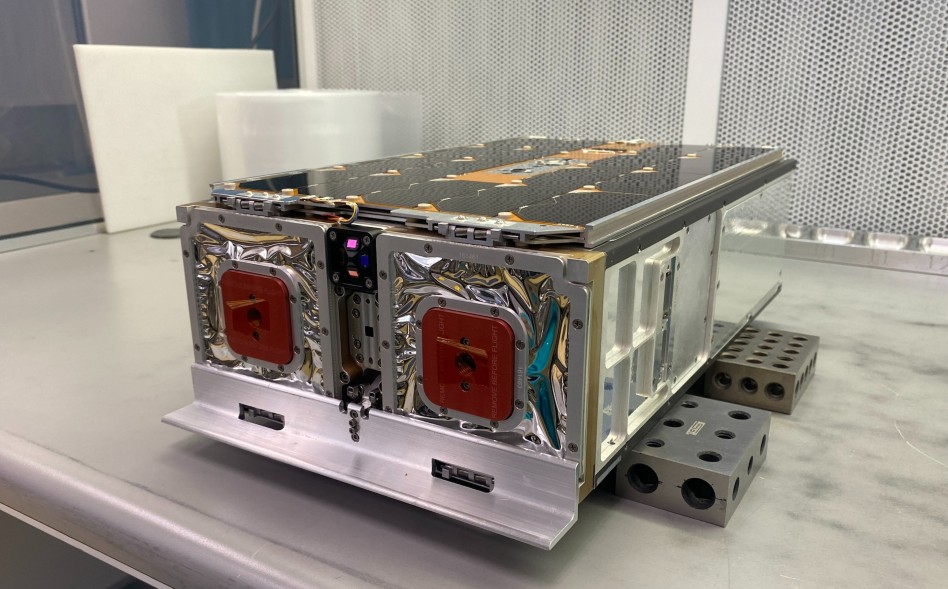
How tiny NASA instrument measures Earth-bound solar radiation
CTIM’s radiation detector takes advantage of a new carbon nanotube material that absorbs 99.995% of incoming light; this makes it uniquely well suited for measuring total solar irradiance

NASA has launched a novel instrument, about the size of a shoebox, to measure all Earth-directed energy coming from the Sun and help scientists understand how that energy influences our planet’s severe weather, climate change and other global forces.
The National Aeronautics and Space Administration (NASA) said that the Compact Total Irradiance Monitor (CTIM) is the smallest satellite ever dispatched to observe the sum of all solar energy Earth receives from the Sun — also known as “total solar irradiance.”
Also read: NASA wants its moon dust and cockroaches back; asks to stop sale
CTIM was launched on Thursday (June 30) aboard STP-28A, a Space Force mission executed by Virgin Orbit. It will start collecting data from July 30.
Once scientists unfold CTIM’s solar panels and check each of its subsystems, they will activate CTIM. It’s a delicate process, one that requires diligence and extreme care, NASA said.
What is solar irradiance?
The solar irradiance is the output of light energy from the entire disk of the Sun, measured at the Earth. It is looking at the Sun as we would a star rather than as an image. The solar spectral irradiance is a measure of the brightness of the entire Sun at a wavelength of light, according to NASA.
Also read: NASA fuels moon rocket for 1st time in countdown rehearsal
“Total solar irradiance (TSI) is a major component of the Earth radiation budget, which tracks the balance between incoming and outgoing solar energy. Increased amounts of greenhouse gases emitted from human activities, such as burning fossil fuels, trap increased amounts of solar energy within Earth’s atmosphere. That increased energy raises global temperatures and changes Earth’s climate, which in turn drives things like rising sea levels and severe weather,” NASA explained.
“By far the dominant energy input to Earth’s climate comes from the Sun. It’s a key input for predictive models forecasting how Earth’s climate might change over time,” said Dave Harber, a senior researcher at the University of Colorado, Boulder, Laboratory for Atmospheric and Space Physics (LASP) and principal investigator for CTIM.
What is CTIM?
CTIM is an eight-channel, 6U CubeSat. Lighter and more compact, CTIM features several improvements to the original Total Irradiance Monitor (TIM) design. In particular, CTIM’s novel Vertically Aligned Carbon Nanotube (VACNT) bolometers mark a significant milestone in the quest to develop lightweight components for CubeSat-compatible instruments, NASA said.
Also read: NASA’s Perseverance rover spots a shiny piece of foil on Mars
These silicon-based bolometers will dramatically reduce the weight of the CTIM CubeSat without compromising its ability to measure the total irradiance of the sun.
CTIM is a prototype. Its flight demonstration will help scientists determine if small satellites could be as effective at measuring total solar irradiance as larger instruments, such as the Total Irradiance Monitor (TIM) instrument used aboard the completed SORCE mission and the ongoing TSIS-1 mission on the International Space Station. If successful, the prototype will advance the approaches used for future instruments.
CTIM’s radiation detector takes advantage of a new carbon nanotube material that absorbs 99.995% of incoming light. This makes it uniquely well suited for measuring total solar irradiance.
Also read: Satellite spots huge burst of methane from Russian coal mine
Reducing a satellite’s size reduces the cost and complexity of deploying that satellite into low-Earth orbit. That allows scientists to prepare spare instruments that can preserve the TSI data record should an existing instrument malfunction. CTIM’s novel radiation detector – also known as a bolometer – takes advantage of a new material developed alongside researchers at the National Institute for Standards and Technology, NASA said.
Previous missions
Earlier, NASA missions like the Earth Radiation Budget Experiment and NASA instruments like Clouds and the Earth’s Radiant Energy System (CERES) have allowed climate scientists to maintain an unbroken record of total solar irradiance stretching back 40 years. This enabled researchers to rule out increased solar energy as a culprit for climate change and recognise the role greenhouse gases play in global warming.


